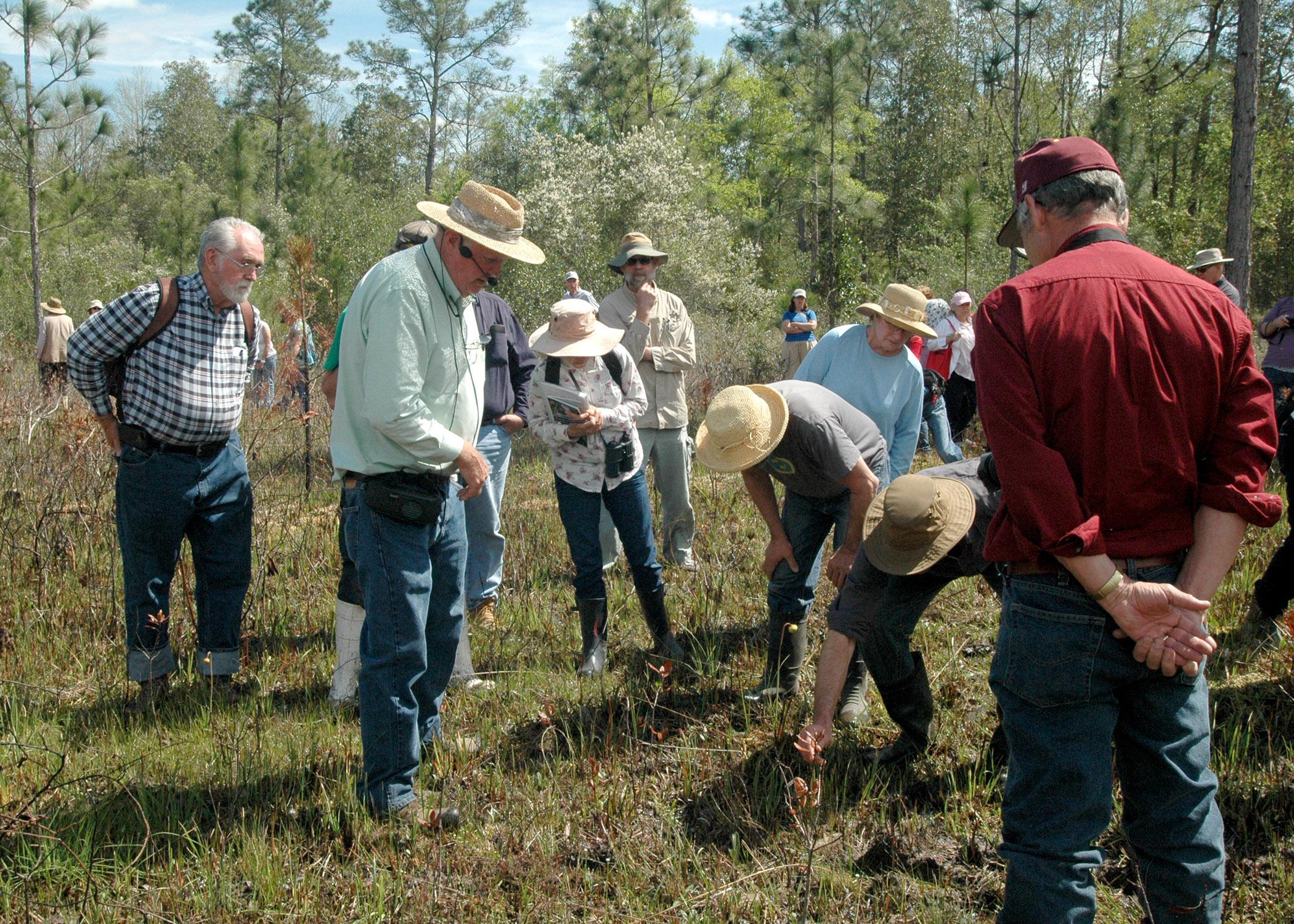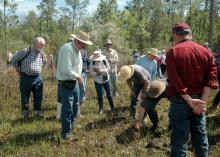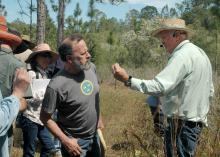Information Possibly Outdated
The information presented on this page was originally released on April 12, 2013. It may not be outdated, but please search our site for more current information. If you plan to quote or reference this information in a publication, please check with the Extension specialist or author before proceeding.
Secrets of native plants revealed at lecture
PICAYUNE -- Louisiana botanist Charles Allen acquired a taste for native plants as a child in his grandmother’s kitchen.
The mountain mint she used in her pork sausage sparked Allen’s interest and led him on a 35-year journey of learning about and preserving native plants that sustain the ecosystem of the Gulf South. Many of those plants are edible and useful around the house.
Allen is a retired biology professor and one of the foremost experts on Gulf South vegetation. He has devoted much of his career to conservation efforts in Louisiana and Mississippi and was instrumental in saving the Louisiana Coastal Prairie from virtual extinction.
Allen spoke during a two-part event April 6 sponsored by Mississippi State University’s Crosby Arboretum and Longue Vue House and Gardens in New Orleans. He introduced a large audience to the flavors and uses of native plants found in the region.
“Dr. Allen has a wealth of knowledge and is a real regional treasure,” said Pat Drackett, Crosby Arboretum director. “People are fascinated with topics on edible plants. If they can learn some unusual uses for our native species, it aids in remembering them. Using native species in the home landscape can increase a property’s biodiversity, and they often require less maintenance. If they can provide us with edible benefits, this is an additional advantage.”
Residents of the Gulf South can skip the grocery store and head to the yard to stock their kitchens, Allen said.
“Between December and May, you can find lettuce in your yard,” Allen told the crowd gathered at the Margaret Reed Crosby Library in Picayune. “Chickweed, sheep sorrel and curly dock are all edible and taste pretty good. Leaves from the red bay tree can be dried and used any way you would use the commercial bay leaves.”
Allen described the flavors, textures and uses for several common native plants he brought for display and sampling. Horse sugar leaves are comparable to apple peels. Juniper can be used to season deer sausage. The leaves, roots and berries of American holly, sassafras and dewberry make tasty teas. Peppergrass can be baked into bread to add a peppery flavor.
Patricia Davis of Picayune said she intends to use some of the plants she finds in her yard after attending the lecture.
“I had no idea that some of these things were edible,” Davis said. “I have been trying to keep them out of my flowerbeds for years thinking they were just weeds. But I’m going to try some of them.”
Allen said those who are interested in trying out the vegetation in their yards should be careful.
“There are a few things that are poisonous,” he said. “Oleander and poinsettias were introduced here and are not native. Most poisonous plants are introduced ones with very few poisonous native ones. But the best rule of thumb is to be 100 percent sure of what you are eating.”
Allen said anyone who is unsure about a plant’s identity should find out what it is by taking pictures and asking an expert before eating it.
The local Mississippi State University Extension office can provide information on edible plants.















